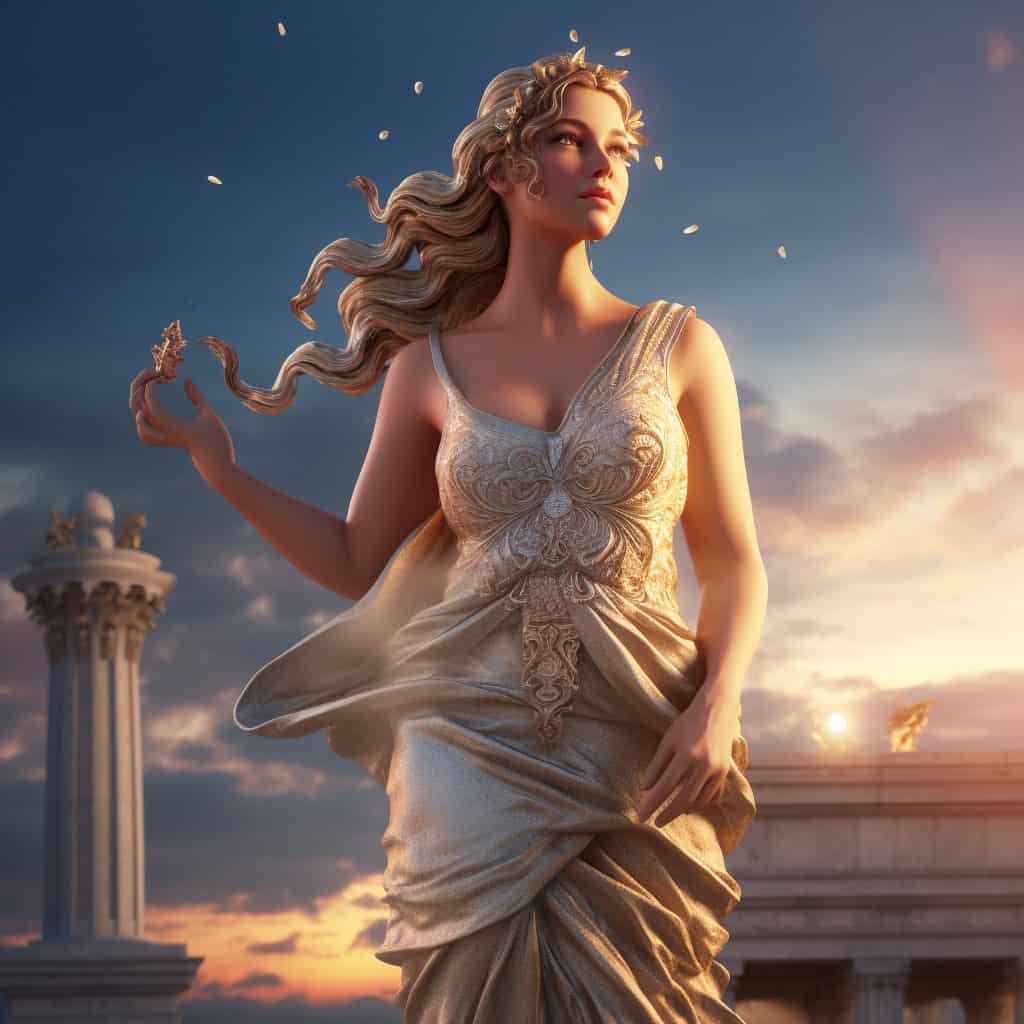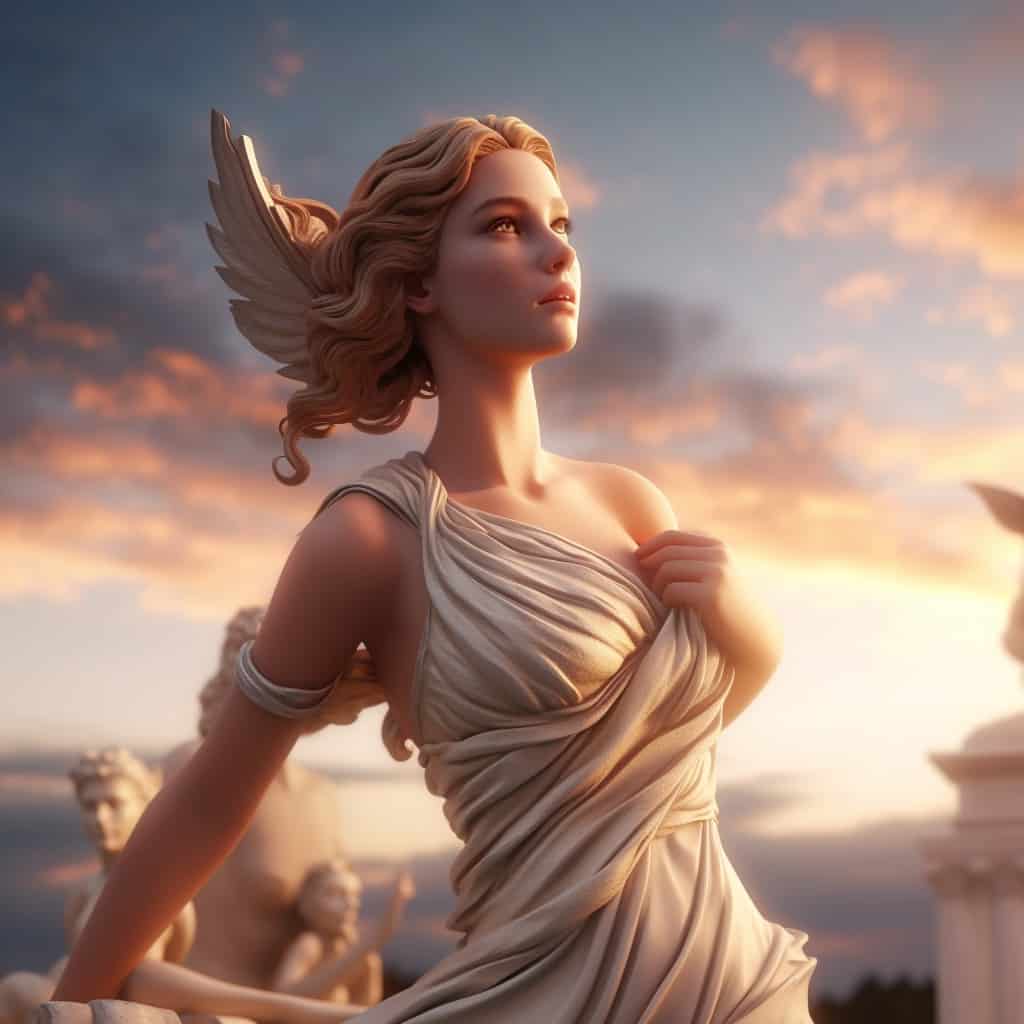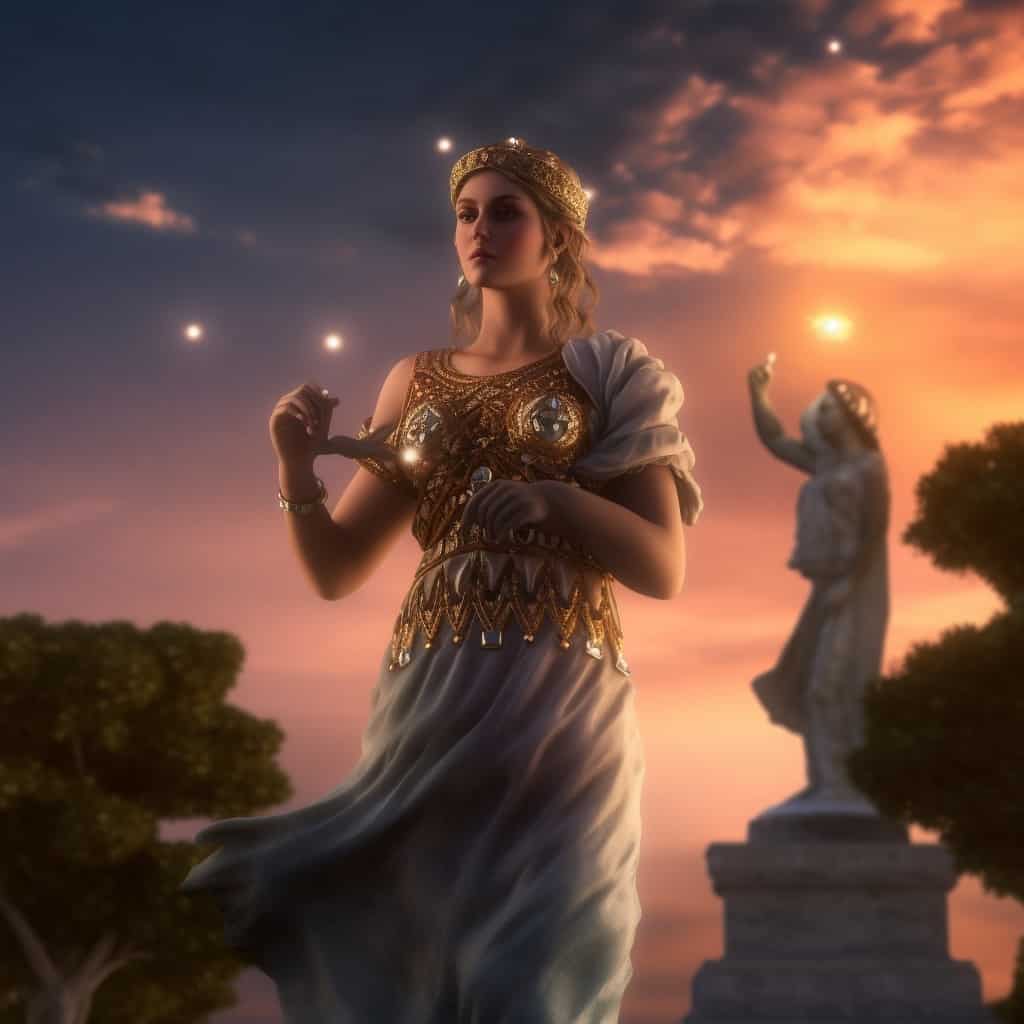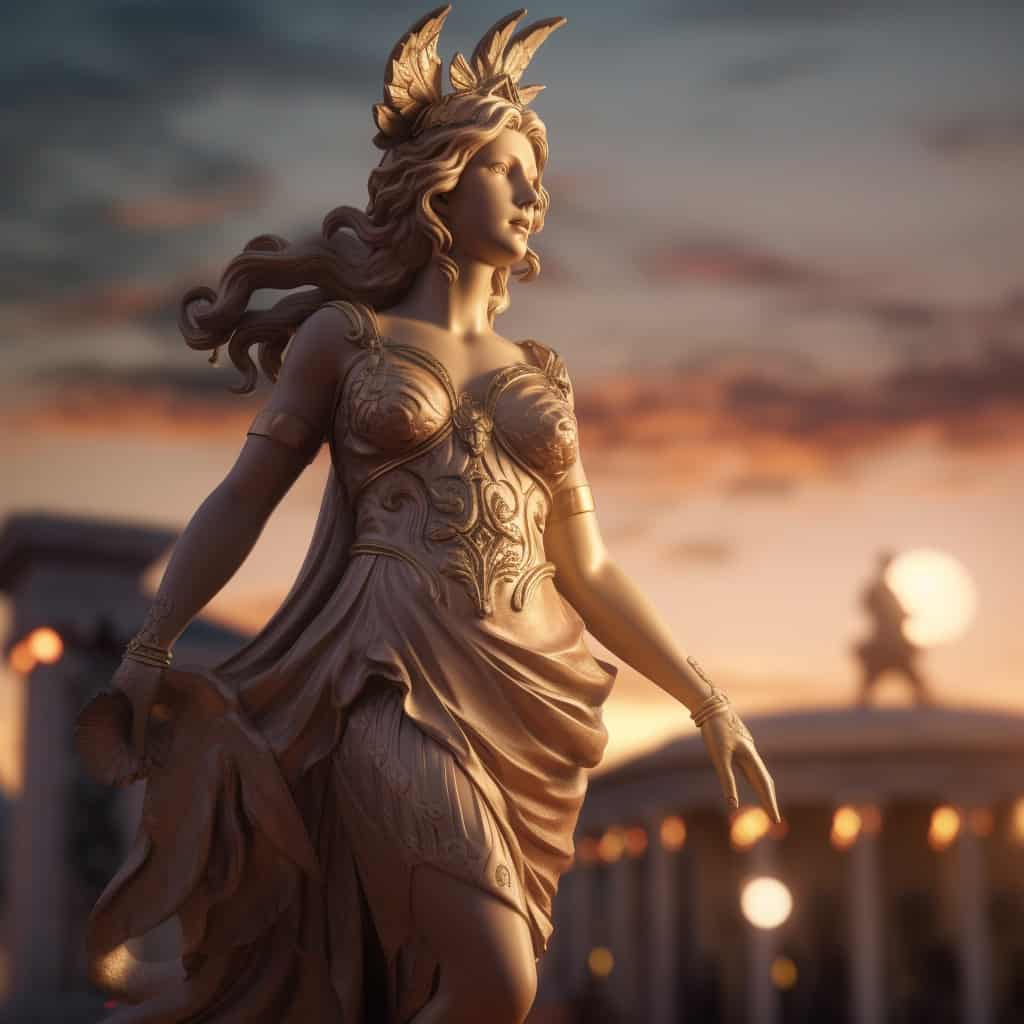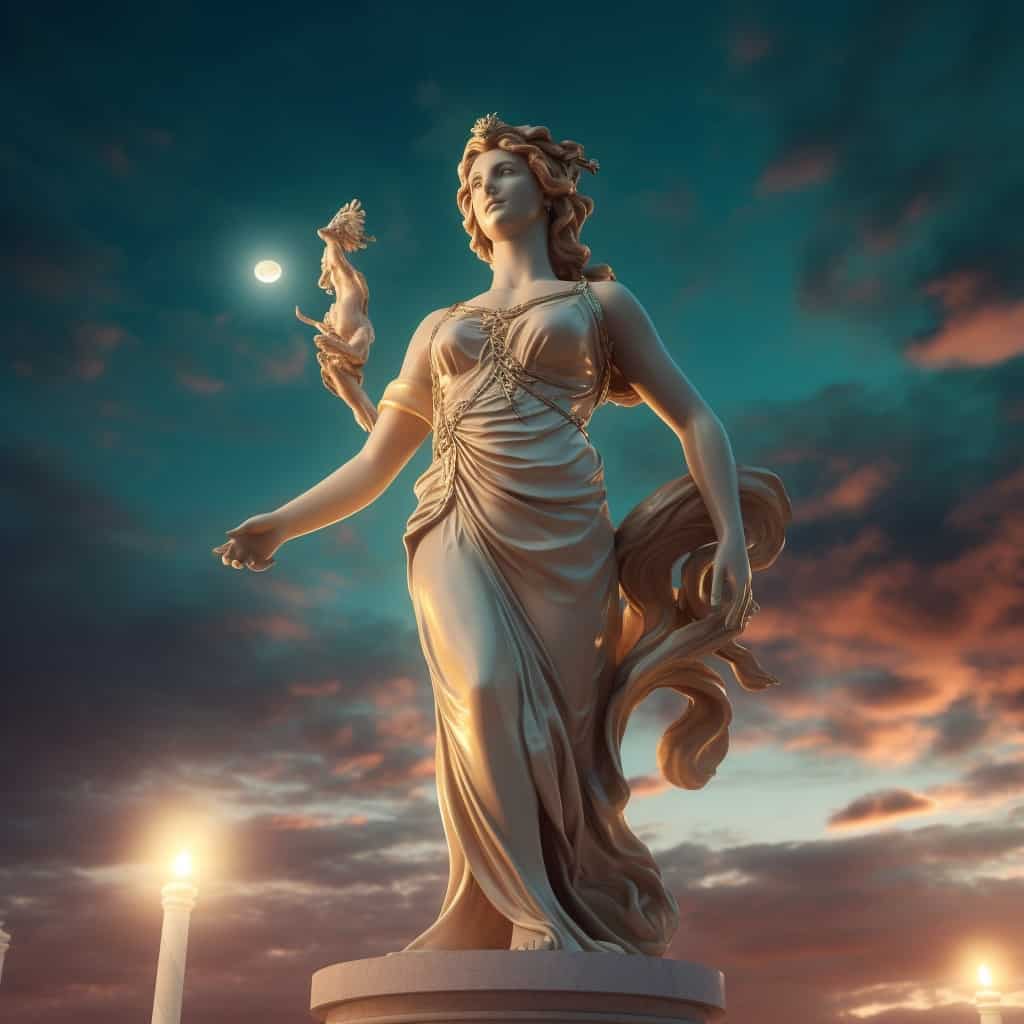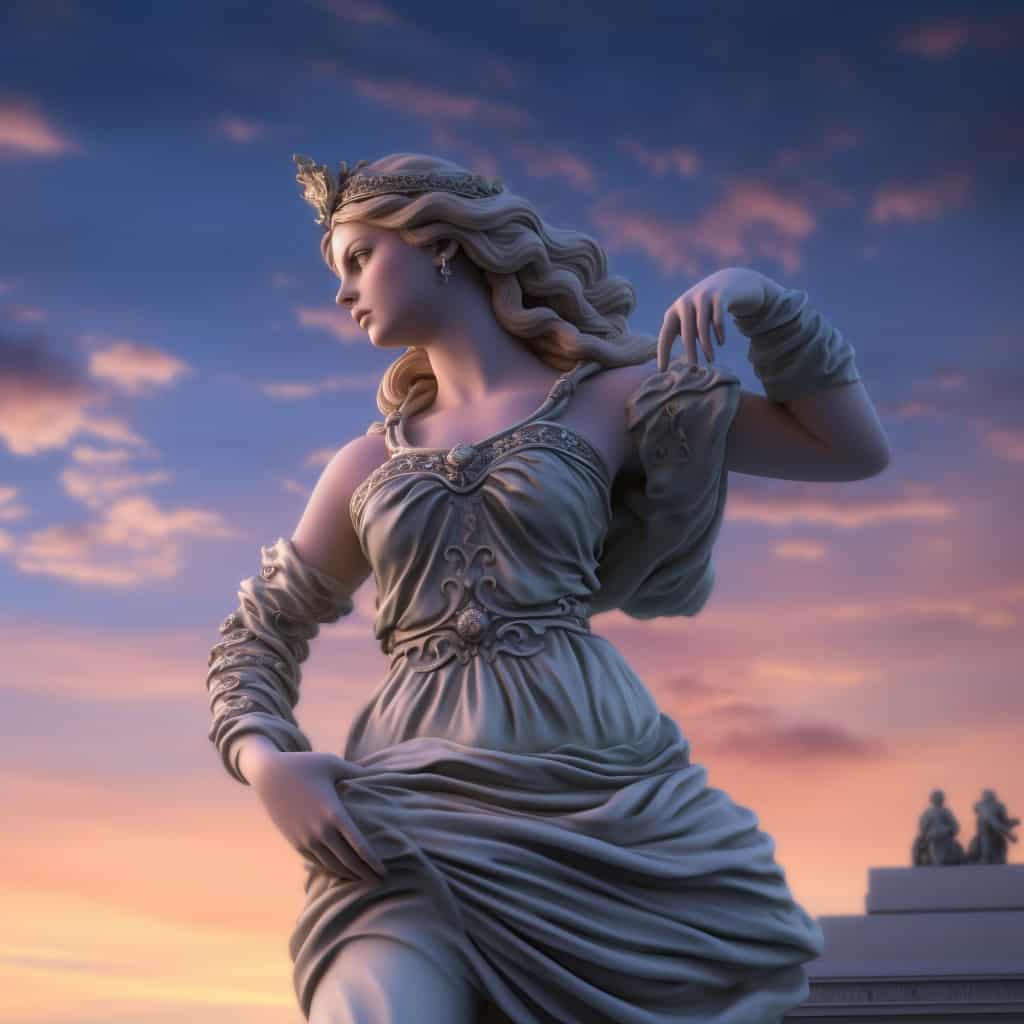Roman mythology is known for having deities that are associated with pretty much any concept you can think of.
They have deities that represent the pillars of our world, everything from the wine you drink to the cycle of life and death.
This is because back in the day, the Romans tried their hardest to explain the world around them by saying that everything is just a representation of a god of some sort.
With that being said, it shouldn’t come off as a surprise that the Romans also came up with Aurora, the goddess of dawn.
She was the one that actually set the beginning of the day in stone, and the one that controlled the cycle altogether.
But who exactly was Aurora and more importantly, what was her role in the Roman pantheon? That’s what we’re here to find out together.
So, embark on this journey with us as we go over everything that makes Aurora special, starting off with a simple yet important question:
Who Was Aurora?
In most iterations, it is believed that Aurora was actually the daughter of the Titan Pallas, although this differs a lot depending on which version you’re reading from. In other cases for example, you may read that she’s actually the daughter of Hyperion.
Regardless, she had two siblings in total, with the first being Luna, the Goddess of the Moon, and Sol, the God of the Sun.
As you can probably tell by now, the three would rule over the cycle of life and day together, as they would control when the night came and when morning finally arrived.
Being the Goddess of the Dawn, she was the one to announce the arrival of the sun every morning, so she pretty much called out to the world every morning to prepare everyone for the sun’s light.
Aurora’s name comes from Latin, and it translates directly to dawn, daybreak and sunrise. She is the Roman counterpart of the Goddess Eos, and while the two are very similar, as you can expect from Roman and Greek mythologies, there are also more than a handful of differences to be seen here too.
There are even more than a handful of depictions which portrayed Aurora with white wings, which may not seem all that strange, until you realize that this was actually heavily associated with the Goddess Eos, not her.
Aurora as the Goddess of Dawn
As mentioned previously, Aurora was the one in charge of announcing daybreak every morning. She would do so by riding her chariot and crossing the sky on it, bringing light to the darkness and banishing night altogether.
In Ovid’s Metamorphoses, Aurora was always portrayed as being young and full of energy. She was the one that had rested all night long after all and she woke up first thing in the morning to bring everyone the gift of daytime.
Her chariot roamed the sky way before the sun did, and as such she left a very beautiful and purple mantle of stars behind her every move.
In some depictions, she also spread flowers as she roamed across the sky, although this is not prevalent in all of them.
There are even a few stories in which Aurora and Astraeus, the father of the stars, are lovers for eternity.
In these stories, they also fathered the Anemoi, which are the four great winds. These were Boreas, Eurus, Notus and Zephyrus.
Again though, because she was not one of the main players in the Roman pantheon, it’s no wonder that there was no exact blueprint that was used to describe her as.
Aurora and Eos
Interestingly enough, as mentioned previously, the ancient Romans looked upon Greek culture in awe, and as the years rolled on by they pretty much started to mirror a lot of their tales because of how fascinated they were by them.
This is why you will find so many stories that seem to be talking about the very same gods and goddesses, they even have stories that have the exact same general plots to one another happening around the same time periods.
This, again, is because of how fascinated the Romans were by Greek culture, but one thing that they never copied was the names of the deities.
The names were always different from one another, and in this case the difference between the two gods of the same notion was pretty clear, with Aurora being the one that Romans chose to go for and Eos being the one that the Greeks stood by.
But here’s where things get a bit hard to follow, as the goddess Aurora pretty much made her way both in Greek and Roman myths all the same.
But, for the most part she was still referred to as Eos by the Greeks, and a lot of the time, the stories that came out of the Greeks’ mouth were unique to their culture.
For example, if you’ll look at Greek mythology, you’ll find that Eos and Helios gave birth to five different gods.
These gods were referred to as the Astra Planeta, and they were the following:
- Phainon – He was the representation of planet Saturn
- Phaeton – He was the representation of planet Jupiter
- Pyroeis – He was the representation of planet Mars
- Eosphoros – He was the representation of planet Venus
- Stillborn – He was the representation of planet Mercury
But even though she was a part of more than a handful of stories over the years, Aurora has never played the central role in most stories.
In fact, she was often times left as a nameless deity that very rarely showed up or was brought up in the major timeline of the Roman mythos.
She was the one to bring in the morning each day, that was her role and she did a wonderful job at it, but it’s not like there is a lot to be said about that.
She does show up in Homer’s Iliad though, which is where she also gets her nickname “Rosy-Fingered” from.
Aurora and Tithonus – The Price of Eternity
By far one of the most popular myths regarding Aurora though is her tale with Tithonus, the son of Laomedon, King of Troy.
As you can expect form old tales of gods and goddesses, Aurora also fell in love with a mortal man, and she decided to steal him away from his lands so that he may live with her.
This man was Tithonus, and he was just as in love with her as she was with him. In order to make sure that the two could live together forever though, Aurora granted him immortality, so that he would never be stolen by death.
Sadly, she forgot to give him the gift of youth, so even though the two loved each other greatly on Jupiter, she soon noticed that he grew older and older as time passed.
Even so, he could not pass away, so he shriveled away as the years passed them by, all the way up until he himself couldn’t even muster a simple phrase anymore with his withered voice.
He still lived on ambrosial food, and he lived a good and long life on Jupiter alongside his lover. Before long however, he could not even move a single muscle anymore.
As such, she decided to finally turn him into a grasshopper so that he may roam around the plane and sing to her every time she laid her eyes on him.
The Tale of Memnon and Achilles
Soon after the two came together, their son came into being. He was known as Memnon, and he was the son of the Aehiopians.
He actually decided to follow his father’s kindred in the war of Troy, so he set off to announce his arrival to Laomedon.
When he saw his grandson show up with the army at his footsteps, Laomedon couldn’t be happier with it, as he welcomed him with great honors and listened to his stories all day long.
The next day though, Memnon decided to offer his help without asking for Laomedon’s permission, so he led his troops on the field and he laid waste to Antilochus, the son of Nestor.
With the Greeks on the run, it’s no wonder that Memnon thought to himself that he was unbeatable at that time.
But this was not the end of the story, as soon enough Achilles made his way onto the field and he himself destroyed the forces of Memnon.
Before long Memnon was also taken down in the battle, and Achilles took his head, forcing the people of Troy to retreat indefinitely.
The Pain of Being a Mother
Upon seeing her child keel over and die in battle, she decided to direct his other brothers, the Winds, to take his body alongside the banks of the river Esepus from Paphlagonia.
Later on that night, the Winds did as they were told and they brough the corpse of their brother to their mother.
She arrived there accompanied by the Hours and the Pleiads, and as soon as she saw her son’s lifeless body she fell on her knees and she mourned him.
Night, upon seeing her grief, decided to spread the heaven with clouds’ all nature, showing the rest of the world that this was not the time to celebrate, but to cry because a mother had lost her child.
The Aethiopians decided to raise his tomb on the banks of the stream where the nymphs lived, and Jupiter was the one to create the sparks and cinders that would turn the funeral-pile into the flame.
It is believed that every year after this, the birds would return to the place where the son of Aurora had passed and they would celebrate his obsequies as such.
Another interesting fact about this event is that Aurora never quite stopped mourning the loss of her son.
She would cry out for him every morning, which is represented by the early morning dew drops that you can find in the grass.
So, this is how the Romans explained this phenomenon, as according to them, before her loss there was no such thing as morning dew drops.
Real Life Effigies of the Myth
Most of the stories from ancient mythology are pretty much unproveable simply because there is no way to trace them back to real life.
But this isn’t the case for this story as we have been able to discover more than a handful of memorials that prove that there is some truth to this story.
You can find two massive statues for example on the banks of the river Nile from Egypt. One of these is believed to be the statue of Memnon, which a lot of experts believe was so big that it was actually the first object in the place to be hit by the rising sunlight in the morning.
At the same time, it is believed that back when it was first built, a sound could be heard as soon as the sunrays hit the statue, which is believed to resemble that of the snapping of a harp-string.
While all of this is pretty much just speculations and hearsay, it is still interesting to say that such an old statue would exist in the first place.
There have been a handful of modern testimonies that swear by the fact that the sound could still be heard today, although this is all pretty much just, “he said/she said”.
In order to explain this phenomenon, some experts even stated that the sounds could very well be produced by the air that is confined in the crevices of the statue.
This could very well be true, considering the fact that the statue is actually hollow on the inside, although this doesn’t explain the nature of the sound.
Regardless of any of that, the vocal statue of Memnon was used a lot by the poets to allude to the gods in ancient poems, so we can’t say that its existence didn’t serve its purpose.
Aurora Symbolism
Aurora was nowhere near one of the most worshipped goddesses in the Roman pantheon, quite the contrary actually.
As mentioned previously, she was very rarely even brought up in stories, as for the most part she merely did her job on a daily basis.
There is the story of her and Tithonus, although that’s a bit of an exception because again, it was all meant to showcase the tragedy of pride and the pain of losing a child.
But regardless of any of that, even though she was not the most popular deity around, she still had a few followers that worshipped her.
That’s because even though she was not the most popular or powerful goddess, she was still meant to serve as the representation of one of the most important parts of the day.
She represented new beginnings and the morning after a tragedy. She was the one that laid waste to the darkness and she served as the catalyst to a new dawn.
Her name was also taken to represent the beautiful aurora borealis these days, and unsurprisingly so as she was often times depicted as being a beautiful young lady that was always very energetic and happy with her job.
Some even believe that the magical colors and lights that come from the aurora borealis are actually just Aurora’s mantle as she rides across the sky. She has been mentioned in the Iliad, the Aeneid and of course, the famous Romeo and Juliet tale.
Other known equivalents to Aurora from different mythologies outside of Eos include the Japanese Ame-no-Uzume, the Slavic Zorya and of course, the Hindu Ushas.
Conclusion
Even though she may not be the most popular goddess in the Roman pantheon, we still believe that Aurora is well worth keeping in mind as she is beautiful, hard-working and completely majestic.
Her stories are usually filled with tragedy and sorrow, but even so, even if she mourns her losses, she still does her job aptly to a tee.

